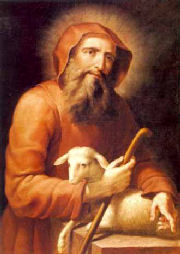St Francis of Assisi's "minor friars" still fighting for peace
 Hamburg - It was 800 years ago that a group of devout men in the central Italian region of Umbria decided to give themselves the modest name of "Fratres Minores" or "lesser brothers."
Hamburg - It was 800 years ago that a group of devout men in the central Italian region of Umbria decided to give themselves the modest name of "Fratres Minores" or "lesser brothers."
The brotherhood of Friars Minor, as it also came to be known, grew up in 1209 around 27-year-old Francesco Bernardone, the son of a rich Assisi merchant.
Francis had spent many years searching for a deeper meaning in his life and in the end he chose to renounce wealth for devotion to the impoverished and needy. Those who joined him also gave away their worldly goods.
In the spring of 1209 Francis and 12 followers journeyed to Rome where Pope Innocent III blessed them and gave them permission to preach. The Franciscan Order, which is known worldwide, grew from this beginning.
The members of the first three orders, including the all-male First Order of Friars Minor, currently number around 35,000. Most of the members are lay men and women from the secular Third Order whose members seek to live an integrated life in the community.
The Franciscans may seem remote from modern life but a new book by German author and Capuchin Order member Niklaus Kuster, "Francis, Rebel and Holy Man," not only brings the story up to date but places the order in a modern context. In the opening pages the writer explains the special significance of the town of Assisi, 170 kilometres north of Rome. He calls it a place "with which people of all countries, languages and generations have a special affinity."
It is also the place where "the world's religions came together" in January 2002 "to make a stand." In a chapter on modern developments Kuster points out that Pope John Paul II invited representatives of world religions to Assisi four months after the terrorist attack on the World Trade Centre in New York on September 11, 2001. The aim was for them to "confer and pray in order that world peace might yet be achieved."
What Kuster does not however mention is that this event left a deep impression on then Cardinal Ratzinger, now Pope Benedict XVI. The text issued in Rome maintains that Francis of Assisi "still radiates the spirit of peace which convinced the sultan of the day and brought barriers tumbling down." This is a reference to an encounter between Francis and Sultan Malik al-Kamil in Egypt in 1219 at a time when a truce existed between the Christian Crusader army and their Moslem foes.
Francis and one of his brothers allowed themselves to be taken captive by the sultan. They were tied and brought to the Moslem leader, telling him they wished to pass on a message from Jesus. Franciscans said later that the sultan was "greatly moved" by Francis' "poverty and transcension of worldly affairs." In 2005 Italian author Pacifico Stella noted that when in Egypt Francis had not been trying to convert the sultan but to embark on a peace mission.
Amid today's global social problems and other challenges, Francis is enjoying a revival of interest and is viewed as a holy person who addressed the moral values of those around him. To live such an ascetic existence today is not achievable and has hardly been possible since medieval times.
Yet as Austrian theologian Adolf Holl pointed out Francis embarked on something which is still not taught in today's schools or homes - he voluntarily traded affluence for a humble life. He continues to be seen as an inspiring figure, one who in the spirit of Jesus, embodies the message of brotherly love and self-renunciation rather than self-gratification.
Today members of Franciscan Orders carry out their pastoral work on all continents and in many different problem areas. Their works include helping drug addicts in Europe and slum-dwellers all over the southern hemisphere. (dpa)